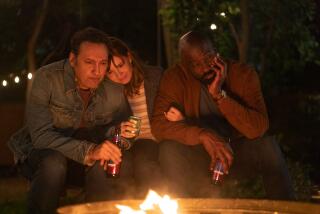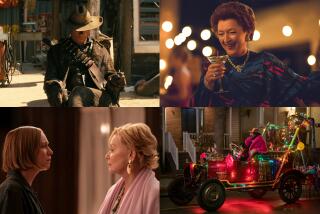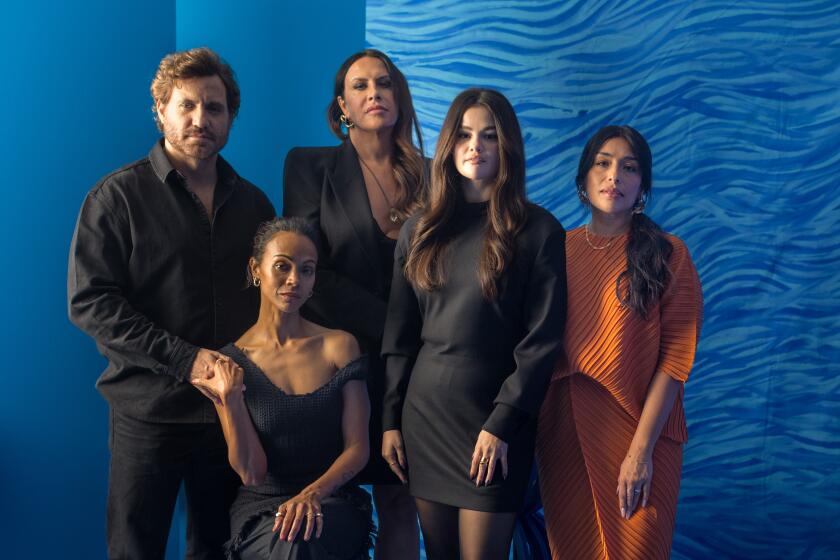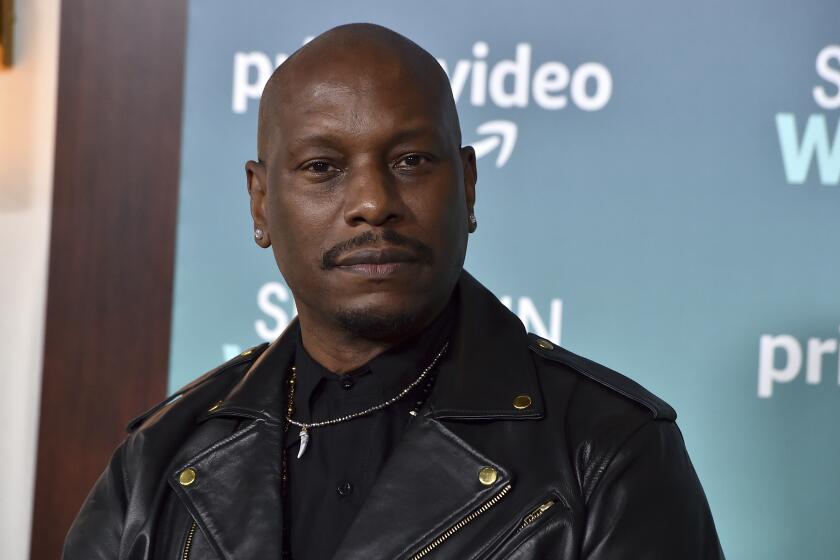Scene Dissection: “Up” director Pete Docter on the film’s emotional opening montage
Creating a dramatic and believable depiction of people’s lives in the running time of a motion picture is a challenge for most screenwriters and directors, but in “Up,” Pete Docter and his creative team at Pixar had just a scant few minutes to give the back story of his protagonist, curmudgeonly senior citizen Carl Frederickson (voiced by Ed Asner), which would in turn give him an iron-clad reason to fly his entire house to South America via balloon. What’s remarkable about the sequence is not only the scope of the time covered, which takes Carl and his beloved, Ellie, from childhood to old age, but also the complex emotional issues that it addresses, as well as the fact that it unfolds largely in total silence save for Michael Giacchino’s Oscar-nominated score. It is as remarkable a feat of motion picture bravery and technical virtuosity as any audiences have witnessed this season, and Docter -- fresh from the film’s win for best animated feature at the 2010 BAFTA Awards -- took time to discuss with The Envelope the path it took from imagination.
Q: What made you choose this scene for discussion?
A: It’s certainly one that seems to stick in people’s heads, and it’s really what grounded that character for most of the audience. If you just started the film with him flying his house to South America, you’d be left scratching your head and asking, “Why is he doing this? Why doesn’t he take a train or something?” So we really needed to land him quickly and make clear his drive for the rest of the film.
Q: Had it always been conceived as a largely silent scene?
A: Actually, no. Bob Peterson originally wrote a series of very short scenes, two or three on a page with dialogue, and the characters were completing each other’s sentences and other snippets that showed how well matched they were. And as we went into storyboard, Ronnie Del Carmen, who was our head of story, took on that sequence at the beginning and said, “This would be really great if it was silent.” We sort of resisted for a while, but it was a classic case of, as I believe Mark Twain said, “I didn’t have time for a short letter, so I wrote you a long one.” Over time, we were able to know what we absolutely needed to see in the scene, and what we could cut out.
Q: What was important to that scene for you to get the effect you wanted?
A: From a “feel” standpoint, it was the sense of a life lived, and not only the highs, but the lows. That’s why we put in a couple of dark moments, like their not being able to have children, and of course, her passing away, so the scene didn’t feel like a total Pollyanna thing. It actually feels more real, and I think that’s how you remember life being like. We also talked early on about most of us grew up in homes where our folks were taking Super-8 films of our family. And when you go back and look at those, they’re also silent, but there’s something powerful about having no sound. Conversely, we also have audiotapes of our families, which have no picture, and that’s equally powerful, because in either case, there’s something asked of you as the viewer or listener - you’re actively engaged by creating this missing element, so it comes to life in your own head.
We even had sound effects in that sequence for a long time, like the jars with their money to South America smashing and the tire in the car popping, and we took all that stuff out as well and left just Michael Giacchino’s score.
Q: Once it had been decided that the sequence would be silent, where did you draw your inspiration for its development?
A: Most of the moments were things that were pulled from our own lives, or things that we could imagine happening. As for the style of the filmmaking, I know that early on, we looked at a couple of commercials -- I can’t remember which -- and a couple of music videos that were mainly comprised of home videos. Strangely, we got a couple of home movies from the Internet -- Michael Giacchino has a collection that I think he ordered from EBay. And we had no idea who the people in them were, but we’d watch their lives progress and piece them together -- we’d note, “Oh, now there’s a new kid in the picture. And what happened to that person? I guess they must’ve moved away.” It was strangely compelling.
Q: Did they start to create their own narrative as you watched them?
A: Yeah, they did. We saw recurring characters in the collection that Michael has, and we’d try to guess at the relationships between them -- it was pretty cool.
Q: Was there any resistance along the way to making the scene silent? You mentioned that there was a little concern at the beginning.
A: We were working on “Wall-E” at the time, which had even less dialogue. And if you go back and look at any of the Pixar shorts, or any of our individual shorts, mine are almost entirely without dialogue. You really rely on movement to carry story points. So being as we were mostly animators, I don’t think there was really any fear there. There were some concerns about the amount of information that we had to pack in, given the time constraints, and we would need dialogue. But we resisted that and were able to prove otherwise.
Q: Were there sequences that didn’t make it into the montage?
A: What we had initially was a scene where they were little, and which had dialogue, like the scene we have in the film, and which ended with a punch. The little girl (voiced by Docter’s daughter, Elizabeth) punches the boy because he was mean to a bird, and then we went to a punching contest. We then showed them growing older -- in the first version, they were somewhere in their teens -- and getting back at each other through punching each other. She’d be dancing in “The Nutcracker” and bam! A fist would come from offstage. Or he’d be painting a picture and bam! A fist would come flying through the canvas. And it built up to a point when he was ready to punch her, and she steps on a bottle cap as she’s taking the garbage out, and she winces in pain and her hair flies out, and he punches himself. After that, they fall in love. So we had a ton of stuff like that in the early stages, and we needed to cut it down. As much as we loved it, we had to constantly look at things and ask, “Is this absolutely necessary? Is it setting something up and paying something off, or can we do without it?”
We also had a whole sequence of Carl trying to propose to Ellie by sending a ring to her on a balloon, but it’s caught by a gust of wind and floats away, so he has to come back with a smaller, less expensive ring.
Q: Did any of it make it into the “Married Life” featurette on the Blu-ray edition of “Up”?
A: Yeah, if you look at the disc, you’ll see those scenes.
Q: Audiences and critics have had a very emotional reaction to the sequence. Has there been a response that’s had particular resonance for you?
A: The one that springs to me is from a woman who wrote to me. We’ll get letters from time to time, mostly from younger people who are interested in animation. But this was from a woman in her 70s who wrote that she had just lost her husband a couple of months before the film came out. And she didn’t want to sit around the house, so to cheer herself up, she went to see “Up.” And as I’m reading this, I’m going, “Oh, no....” because this is obviously very close to home for her. But it turned out to be a very restorative thing for her, because she said that as she watched the movie, she felt like she was getting to spend a little more time with her husband. It was very meaningful to me that that film could do that for someone.
More to Read
Only good movies
Get the Indie Focus newsletter, Mark Olsen's weekly guide to the world of cinema.
You may occasionally receive promotional content from the Los Angeles Times.










